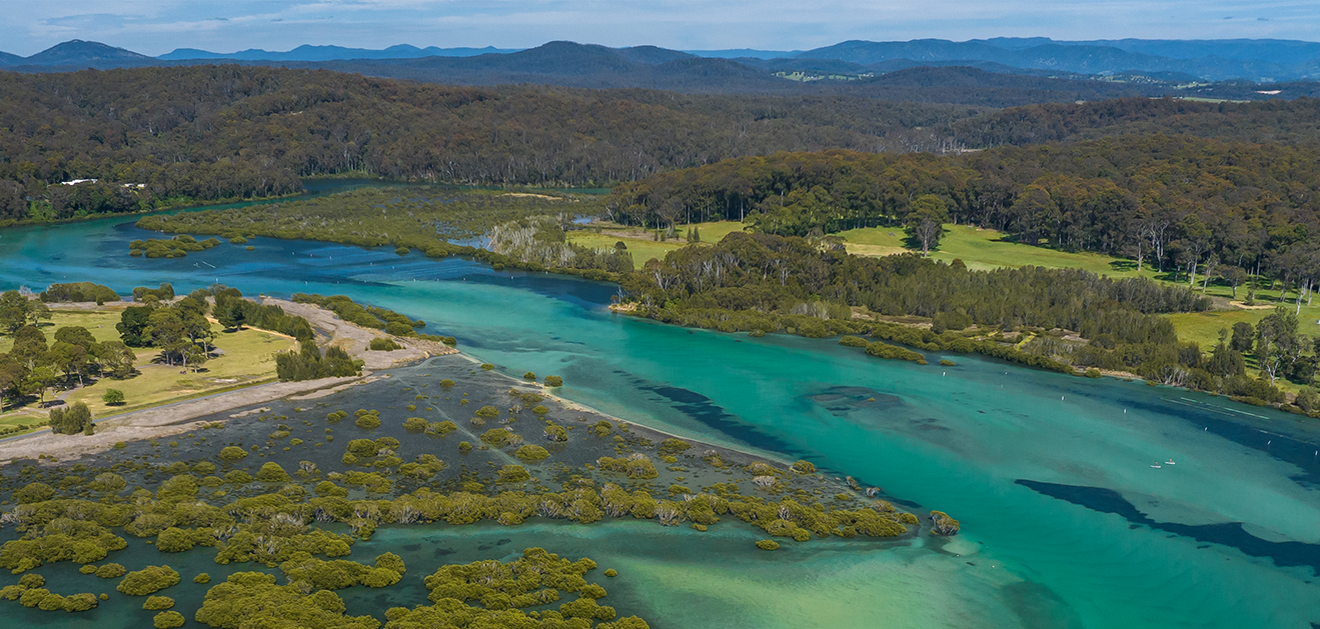How to Taste Rock Oysters Like an Oyster Sommelier
01 September, 2025

11 July, 2025
UNDERSTANDING MERROIR - A TASTE OF PLACE
The wine industry has a unique word for the special alchemy that occurs when environmental factors, farming practices, the attributes of land and soil from a specific place combine to create the flavour profile of a wine. That word is terroir.
Like wine, the flavours and textures of an oyster are determined by the unique environmental attributes of the marine ecosystem in which the oysters are cultivated. Thus, the Rock Oyster industry works to a little known merroir system, which similarly distinguishes an oyster based on its marine environment, as well as the farming and harvesting practices of the estuary in which it is grown.
Rock Oysters are filter feeders, constantly ingesting algae, minerals and organic particles from the water, meaning they are truly a product of their environment. When eating an oyster, you are travelling through the oyster’s marine environment, the nuanced flavour profile of each oyster an expression of its particular place of origin.
The ocean has a salinity of 36ppt (parts per thousand) and represents the extreme top end of brine intensity. Most estuaries in NSW have a salinity between 26 and 33ppt. This varies in concentration across seasons and locations and is influenced by freshwater inputs such as rain, snowmelts or oceanic tidal movements.
Like wine, the oysters of each region have a different flavour and can vary in colour. Oysters grown in fresher water, or soon after rain, will have a sweet flavour. Oysters grown close to an estuary mouth will have a saltier, briny flavour.
Depending on the soil and vegetation types in the catchment, oysters will not only vary in flavour but also in colour. For example, oysters can have mineral notes depending on soil and seabed type, and can have varying hints of greens and yellows in the oyster fringe depending on the vegetation found beneath the water surface.
In New South Wales, Wonboyn has the greatest freshwater inputs and consequently the lowest salinity concentration of any estuary on the coast. Therefore, Rock Oysters from Wonboyn will exhibit the mildest brine flavour profile of any oyster.
Conversely, Merimbula has high oceanic tidal movements, minimal freshwater inputs and the oysters are grown close to the mouth of the estuary. This creates one of the highest salinity environments for oyster cultivation in NSW. Therefore, the brine intensity of Merimbula Rock Oysters is high.
An oyster’s merroir is no more evident than in the Rock Oyster. Living comfortably in nutrient laden estuarine environments, Rock Oysters are generally more fragile than their marine counterpart the Pacific Oyster and, thus, their flavour and texture are more reflective of their environment.
Perhaps it’s their pungent, briny liquor, the flavour of which can vary not only by estuary but in the micro regions within an estuary too. Perhaps it’s those evocative names, derived from actual locales: Wonboyn, Wapengo or Merimbula. Or perhaps it’s because they’re still alive when you eat them. Does any other food embody such a powerful sense of place?